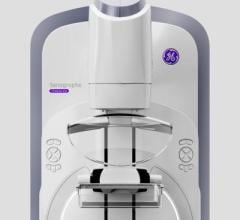
January 7, 2015 — The value of volumetric breast imaging data to provide critical insight for optimal breast imaging quality and workflow was the focus of numerous abstracts accepted for presentation at the 100th Annual Meeting of the Radiology Society of North America (RSNA), November 30-December 5, 2014.
According to Volpara Solutions, six abstracts highlight the use of quantitative breast imaging software tools to provide breast imaging and analytics data. Presented data types including volumetric density, patient-specific dose, applied pressure and other factors designed to maintain accuracy and consistent quality in breast screening using digital mammography and digital breast tomosynthesis.
In the scientific exhibit, “Can we use the manufacturer reported mammography dose to inform patients?” (BRS263), researchers from Elizabeth Wende Breast Center reviewed manufacturer-reported mean-glandular dose (MGD) for 30 women who had undergone sequential screening mammograms on a mix of three manufacturers’ systems. The manufacturer-reported MGD varied considerably sequential mammograms and between manufacturers, with changes ranging from -2.87 to +4.31 mGy. Additionally, since the algorithms used by manufacturers vary, the estimations are not easily compared.
This is consistent with other research, which has demonstrated that mammography units routinely under- or overestimate dose because they do not include the patient’s specific volumetric breast density in the estimation. In another abstract examining patient dose in mammography, “System-wide monitoring of mammographic radiation dose for quality assurance”, researchers from Weinstein Imaging used VolparaAnalytics on more than 11,000 images to compare manufacturer-reported MGD to a patient-specific estimate. Automated stratification of the data by mammography unit suggested that one vendor underestimated MGD compared to the patient-specific dose calculations, despite similar breast density characteristics of the populations. The abstract concludes that for more accurate reporting of MGD, it is essential that a standardized method be used across all manufacturers’ systems.
"At Weinstein Imaging, we want to ensure our patients are safe and informed during screening. Part of that includes monitoring and recording patient dose. Volpara enables true comparison of dose across machines so that we can spot issues early and truly keep women safe and informed," said Marcela Böhm-Vélez, practicing radiologist and president of Weinstein Imaging.
Accurate breast density estimation is important for breast cancer risk assessment and guiding personalized breast screening recommendations. In the presentation, “Fully automated volumetric breast density estimation from digital breast tomosynthesis images: Multimodality comparison with digital mammography and breast MRI”, researchers from the University of Pennsylvania reviewed results of a study to evaluate the feasibility of automated volumetric breast density for breast tomosynthesis and compared the results to digital mammography and breast magnetic resonance imaging (MRI). The abstract concludes that volumetric breast density estimates from breast tomosynthesis data sets were highly correlated to density estimates from digital mammography and MRI, and hold the potential for more accurate density assessments and more accurate measures of breast cancer risk.
In addition, the “Breast Imaging Breast Density & Risk Assessment” session included three presentations that featured VolparaDensity: ”Automated volumetric breast density and risk of cancer stratified by pathological attributes,” “Comparing breast density measurement techniques in screening digital mammography” and “The diagnostic effect of digital breast tomosynthesis in relation to visually assessed and automated volumetric breast density.” The role of volumetric density in adjunctive imaging for women with dense breasts was the topics of numerous presentations.
For more information: www.volparasolutions.com


 April 24, 2025
April 24, 2025 








